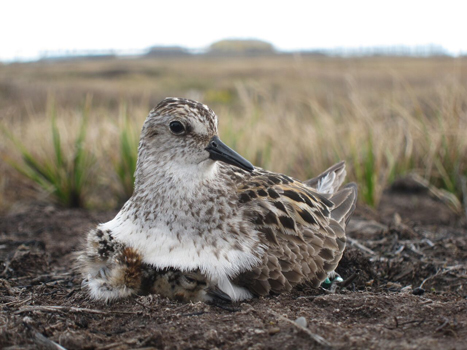The behavioural rhythms of organisms are thought to be under strong selection, influenced by the rhythmicity of the environment. Such behavioural rhythms are well studied in isolated individuals under laboratory conditions, but free-living individuals have to temporally synchronize their activities with those of others, including potential mates, competitors, prey and predators. Individuals can temporally segregate their daily activities (for example, prey avoiding predators, subordinates avoiding dominants) or synchronize their activities (for example, group foraging, communal defence, pairs reproducing or caring for offspring). The behavioural rhythms that emerge from such social synchronization and the underlying evolutionary and ecological drivers that shape them remain poorly understood. Here these rhythms are investigated in the context of biparental care, a particularly sensitive phase of social synchronization where pair members potentially compromise their individual rhythms. Using data from 729 nests of 91populations of 32 biparentally incubating shorebird species, we report remarkable within- and between-species diversity in incubation rhythms. Between species, the length of incubation bouts was unrelated to variables reflecting energetic demands, but species relying on crypsis had longer incubation bouts than those that are readily visible or who actively protect their nest against predators. Results indicate that even under similar environmental conditions, social synchronization can generate far more diverse behavioural rhythms than expected from studies of individuals in captivity. The risk of predation, not the risk of starvation, may be a key factor underlying the diversity in these rhythms. informacion[at]ebd.csic.es: Bulla et al (2016) Unexpected diversity in socially synchronized rhythms of shorebirds. Nature. 2016 Nov 23. doi: 10.1038/nature20563
http://rdcu.be/mUso  Latest News
Latest News
 Open Call for Research Projects in ICTS-Doñana!
Open Call for Research Projects in ICTS-Doñana!
The Singular Scientific and Technical Infrastructure Doñana Biological Reserve (ICTS-Doñana) announces the opening of a call for international research projects in the Doñana Natural Space.
 Las altas temperaturas están provocando que las lagunas y las marismas de Doñana pierdan agua rápidamente
Las altas temperaturas están provocando que las lagunas y las marismas de Doñana pierdan agua rápidamente
La superficie inundada en la marisma es de un 78% pero la profundidad es escasa. Por otra parte, sólo el 1,9% de las lagunas temporales están inundadas. Las precipitaciones crean una oportunidad...
 Traffic noise causes lifelong harm to baby birds
Traffic noise causes lifelong harm to baby birds
A study with CSIC participation reveals for the first time that car noise harms individuals throughout their lifetime even years after exposure
 Illegal wildlife trade, a serious problem for biodiversity and human health
Illegal wildlife trade, a serious problem for biodiversity and human health
A research team led by the Doñana BIological Station and the University Pablo de Olavide have detected wild-caught pets in 95% of the localities in the Neotropic and warns of the risk of zoonotic...
 Urbanization and loss of woody vegetation are changing key traits of arthropod communities
Urbanization and loss of woody vegetation are changing key traits of arthropod communities
Urbanization is favouring smaller beetle species and larger spider species with greater dispersal capacity.
The loss of woody areas is linked to a decline in the duration of the activity...
The loss of woody areas is linked to a decline in the duration of the activity...
— 5 Items per Page
 Asset Publisher
Asset Publisher
Back





